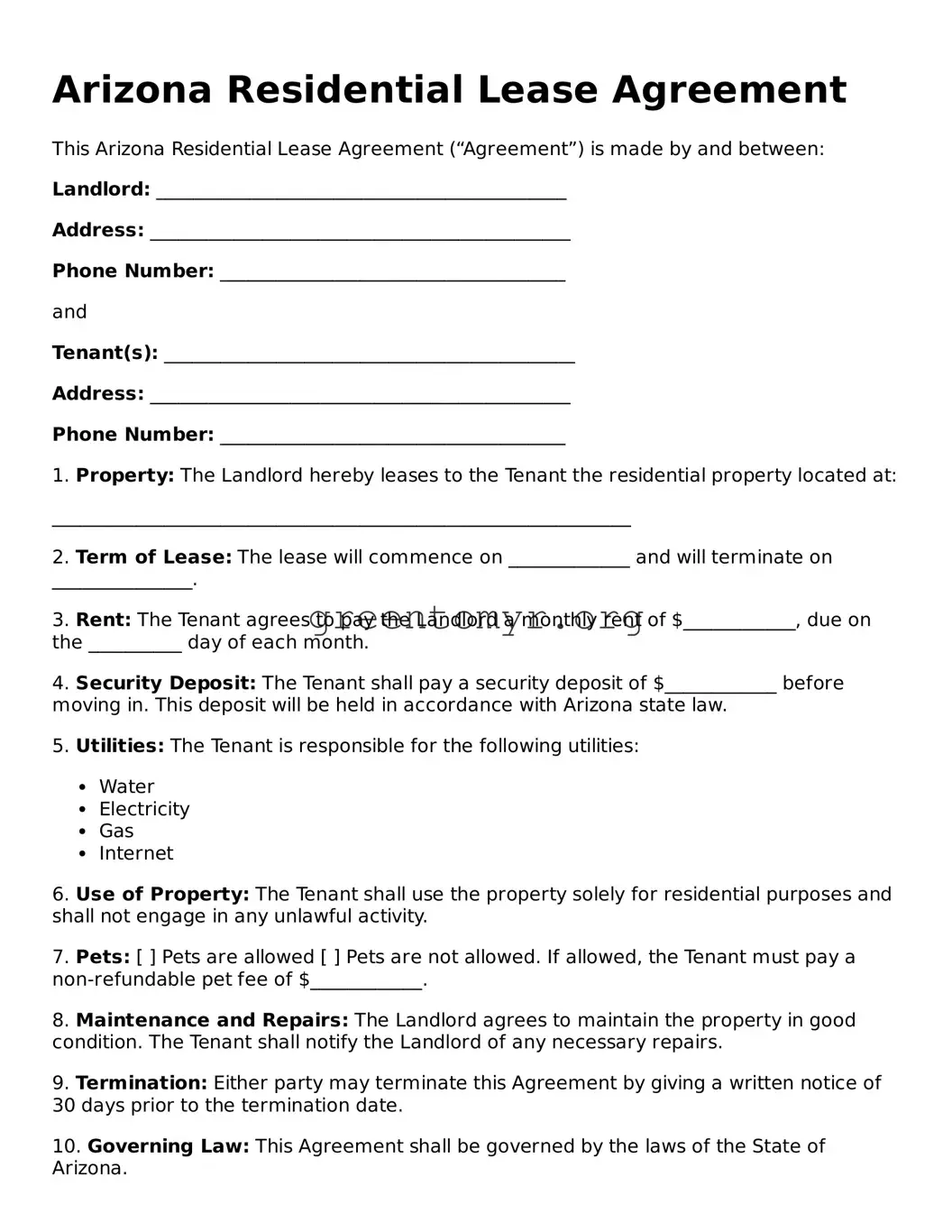Arizona Residential Lease Agreement
This Arizona Residential Lease Agreement (“Agreement”) is made by and between:
Landlord: ____________________________________________
Address: _____________________________________________
Phone Number: _____________________________________
and
Tenant(s): ____________________________________________
Address: _____________________________________________
Phone Number: _____________________________________
1. Property: The Landlord hereby leases to the Tenant the residential property located at:
______________________________________________________________
2. Term of Lease: The lease will commence on _____________ and will terminate on _______________.
3. Rent: The Tenant agrees to pay the Landlord a monthly rent of $____________, due on the __________ day of each month.
4. Security Deposit: The Tenant shall pay a security deposit of $____________ before moving in. This deposit will be held in accordance with Arizona state law.
5. Utilities: The Tenant is responsible for the following utilities:
- Water
- Electricity
- Gas
- Internet
6. Use of Property: The Tenant shall use the property solely for residential purposes and shall not engage in any unlawful activity.
7. Pets: [ ] Pets are allowed [ ] Pets are not allowed. If allowed, the Tenant must pay a non-refundable pet fee of $____________.
8. Maintenance and Repairs: The Landlord agrees to maintain the property in good condition. The Tenant shall notify the Landlord of any necessary repairs.
9. Termination: Either party may terminate this Agreement by giving a written notice of 30 days prior to the termination date.
10. Governing Law: This Agreement shall be governed by the laws of the State of Arizona.
In witness whereof, the parties have executed this Agreement as of the date below:
Landlord Signature: _____________________________ Date: _____________
Tenant Signature: _____________________________ Date: _____________
